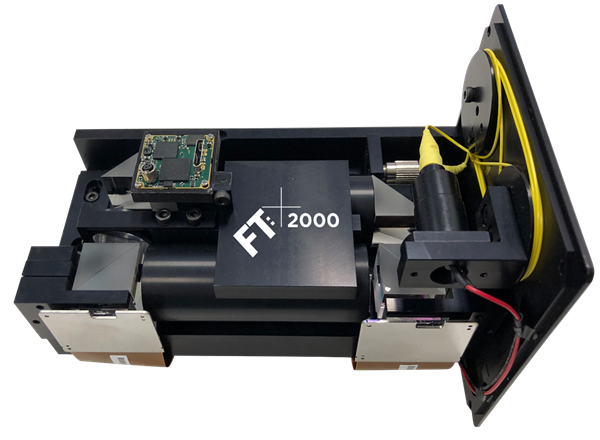
Optalysys, a startup based in the United Kingdom, has introduced an entry-level optical coprocessor, the first such system of its kind on the market. The new system, known as the FT:X2000, is being sold to a select group of partners and early customers in preparation for the commercial launch of the technology later this year.
In a conversation with The Next Platform, Nick New, chief executive officer at Optalysys, described the FT:X2000 as a precursor to the upcoming FT:X3000, which will be the company’s first generally available offering. It is slated for release in early Q3. Until then, the FT:X2000 is preparing the ground, says New, by getting the technology in the hands of people who can put the platform through its paces and begin to develop software for it.
Over the last few years, a number of optical computing startups have been emerging from the shadows, driven by demand for alternate technologies that can offer a viable path for computing beyond Moore’s Law on CMOS chips. Since optical computing using photons instead of electrons as the basis for its processing, it is able to operate at much higher speeds – literally, the speed of light – while needing much less power. In addition to Optalysys, other companies looking to exploit the advantages of optical computing are Lightmatter, Lighton, Fathom Computing, and Lightelligence.
Despite this flurry of activity, optical computing doesn’t yet have the mindshare of other alternative technologies, like quantum or neuromorphic computing. That means these companies have some extra work to do educating customers and investors on its advantages. It’s telling that the Optalysys press release on the FT:X2000 launch cited investments by Google Venture and Baidu into two of its competitors – Lightmatter and Lightelligence, respectively – as evidence that optical technology is now getting the attention it deserves.
All of these startups are primarily focused on the set of applications under the larger umbrellas of artificial intelligence and data analytics, but each is utilizing somewhat different aspects of optical technology. In the case of Optalysys, it is using the diffraction properties of light as a way to implement Fast Fourier Transforms (FFTs), a basic mathematical tool than can be used to represent all sorts of physical and abstract phenomenon. One early use of the company’s technology is genetic search, which can be turned into a pattern matching problem that can be efficiently mapped onto the Optalysys hardware. Other early use cases include numerical weather prediction and mathematical processing.
The Optalysys hardware is based on high resolution liquid crystal microdisplays, which are employed commercially in various consumer and industrial markets. The company uses these microdisplays to diffract a low power laser beam to encode numerical representations associated with FFTs. According to New, there’s nothing really exotic or expensive about the hardware since it’s all based on commodity components. “There are no large fabrication costs attached to it as you would have for a chip design,” he told us. “The components within a mobile phone for example, are not too dissimilar than from what goes into our system.”
The entry-level FT:X2000 product is equipped with a stripped down interface, using a display port for input and a USB port for output. However, the commercial product due out this summer will have a standard PCI-Express interface suitable to hook it into a typical server or even desktop system. The idea is to use the optical device as a coprocessor to accelerate the numerical operations underlying things like machine learning, pattern recognition, and other types of correlation-dependent analysis.
The initial PCI-Express product will draw 10 watts to 60 watts, but according to New will perform about 30 times faster than a GPU on these types of applications. In twelve months, the company plans to launch an even more powerful platform that is projected to be 100 times faster, but with the same low power consumption. New attributes this fast rise in performance to the inherent scalability of the optical technology. In particular, as the resolution of the microdisplays increase, processing becomes more efficient thanks to the parallel nature of the optical technology.
New told us that the initial customers for the FT:X2000 include some big global players in computer manufacturing, defense, and aerospace, but declined to offer specific names. The initial PCI-Express optical accelerator will be aimed exclusively at datacenter users, but a potentially larger opportunity exists for embedded and small-form factor products, where power is at a real premium. “What we’re offering is a very large amount of local processing, but with a small power consumption to go alongside it,” he explains. “That gets us into a very interesting embedded application space such, as IoT and edge computing.”
New sees that market as a unique opportunity for Optalysys technology, especially as its performance-per-watt advantage over its silicon-based competition continues to grow with succeeding generations. As Moore’s Law slows, that advantage could widen even more, driving customers away from their dependence on all-electronics hardware. From his perspective, because of its superior performance and energy efficiency, optical computing is in a good position to take up the slack as advances in silicon-based computing start to peter out. “These are very exciting times, I think,” says New.



Be the first to comment